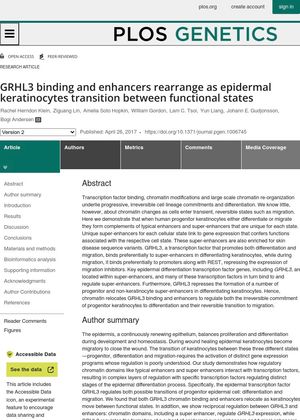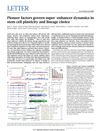GRHL3 Binding and Enhancers Rearrange as Epidermal Keratinocytes Transition Between Functional States
April 2017
in “
PLOS Genetics
”

TLDR GRHL3 is important for controlling gene activity in skin cells during different stages of their development.
In 2017, a study investigated the role of the transcription factor Grainyhead-Like 3 (GRHL3) in the transition of epidermal keratinocytes, the main cell type in the outermost layer of the skin. The researchers found that GRHL3 binds to super-enhancers in differentiating keratinocytes and to promoters during migration, repressing the expression of migration inhibitors. The study also discovered that GRHL3 represses the formation of non-keratinocyte super-enhancers in differentiating keratinocytes, suggesting that chromatin relocates GRHL3 binding and enhancers to regulate both the irreversible commitment of progenitor keratinocytes to differentiation and their reversible transition to migration. The study identified 50 transcription factors that regulate distinct stages of epidermal differentiation, including GRHL3, TP63, RUNX1, NOTCH3, and FOS. The researchers concluded that GRHL3 plays a significant role in keratinocyte gene regulation.

